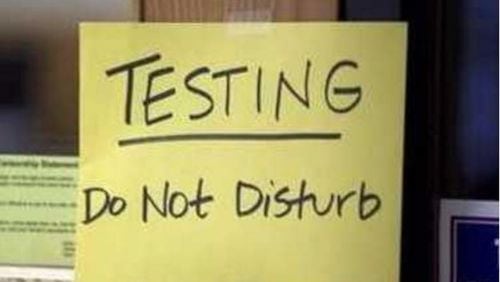Georgia’s plan to comply with new federal education law has hit a bump in the road, with the U.S. Department of Education saying at least one of the state’s proposals doesn’t comply with federal law.
State officials characterized much of Washington’s 7-page letter as minor requests for “clarification” that can easily be addressed, though they acknowledged that three of the concerns are more serious. They involve how Georgia will score schools on the state report card, the College and Career Ready Performance Index.
Parents and other observers use that report card as an indicator of quality, and it holds other consequences for schools. The lowest-performing can be targeted for state intervention by the Georgia Department of Education and by a new school “turnaround” office. The Chief Turnaround Officer can, after working with schools that fail to improve, recommend that they be removed from the control of local school districts and placed under new management.
Matt Jones, chief of staff for Georgia Superintendent Richard Woods, whose education department wrote the plan to comply with the Every Student Succeeds Act of 2015, said Georgia hopes to get it approved with only minor changes. Jones said the state will argue that the three most significant requested changes are not necessary. He said the number of other requested changes was relatively small.
“We were actually pleased with the amount of feedback,” he said.
One big concern involves how to modify a school’s test results when students are absent on the days tests are given or outright refuse to take them. Another was about how to credit schools for testing gains with traditional at-risk groups, such as students who don’t speak English, come from low-income households or are disabled. And the third was about how schools are scored for the performances of their low- versus their high-achieving students, the concern being that high-achieving students could mask the performance of weaker students.
Jones said other states have gotten their plans approved despite similar feedback.
Yet in at least one case, the federal education agency found Georgia’s plan to be in clear violation of the law. Georgia’s proposal to modify a school’s test scores when less than 95 percent of students take the tests is “not consistent with the statutory requirements,” it said.
Allison Timberlake, the official in charge of testing and accountability at Georgia’s education department, said that part of the state plan was an attempt to avoid “wonky” results on achievement measures in schools with high rates of transience, where students who enrolled aren’t always around to take tests. She said Georgia’s proposal is “more rigorous” than federal law.
But Adam Ezring, an education policy expert, said Georgia is proposing to ignore students who don’t go to school on testing days, which could result in abuse, with school administrators encouraging their worst students to miss the tests.
“The issue here is schools not testing all of their students — intentionally,” said Ezring, policy chief of the Collaborative for Student Success, a national nonprofit. And he said Georgia’s plan will let them do it: “This is the state not wanting to report the performance of all students.”
Ezring noted that the approval of Colorado's plan, submitted four months before Georgia's, has been delayed by a similar issue.
A part of Georgia's plan doesn't follow federal law, U.S. officials told the state. The feds asked all states how they planned to comply with the requirement for "95 percent student participation in statewide mathematics and reading/language arts assessments into the statewide accountability system." Here's Georgia's problematic answer:
If the participation rate for all students or a subgroup of students falls below 95%, the achievement score for that group of students will be multiplied by the actual participation rate divided by 95%, provided that the minimum N-size of 40 for participation rate has been met. This ensures the adjustment is proportional to the extent to which the 95% participation rate was not attained. The adjusted achievement score will be utilized in College and Career Ready Performance Index calculations.







